 Class
68:
Tuesday,
5/3/22 Class
68:
Tuesday,
5/3/22Warm Up:
According to Newton's 3rd Law, every force has an equal and opposite
force. So how do you win a game of tug-of-war?
Today:
Homework:
|
|
Class
67:
Friday,
4/29/22 Warm Up:
What's the best way to get a slow motion video onto a school computer?
Today:
- Check Homework
- Spool Car Project:
- Assemble spool cars and practice. The goal is maximum
average acceleration. This entire project is due at the
end of next class, so you should try to get your video into your
Google Drive by the end of class today.
- Use a slow motion video, and the
Vernier Video Analysis App,
to measure top speed, time to reach top speed, and overall time
from start to finish. In Google Classroom, turn in your video
to provide proof of your data. The winning car(s) will
have their data verified.
- Your car's starting point and time
- The point at which your car entered its fastest floor
tile
- The point at which your car exited its fastest floor
tile.
- The point at which your car stopped
- Then measure your car's mass.
- After you have those four bits of data, complete the
spool car analysis (pdf).
This will be a project grade, and it will be graded on
correctness, not completion.
Homework:
|
 Class
66:
Wednesday,
4/27/22 Class
66:
Wednesday,
4/27/22Warm Up:
The 50kg rower has an acceleration of -1m/s2. She is pulling
against the oars with a force of 100N. Draw and calculate all of
the forces acting on the rower.
Today:
-
Check Homework
-
Solve this
spool car practice problem.
Video help
-
Assemble spool cars and practice. Measure top speed, time to
reach top speed, and overall time from start to finish. Then
measure your car's mass. I suggest using slow motion and the
"Coach My Video (CMV Free) App" or the
Vernier Video Analysis App.
After you have those four bits of data, find the force of your spool
car's motor and the force of friction that is acting on your car.
Show your work.
Homework:
|
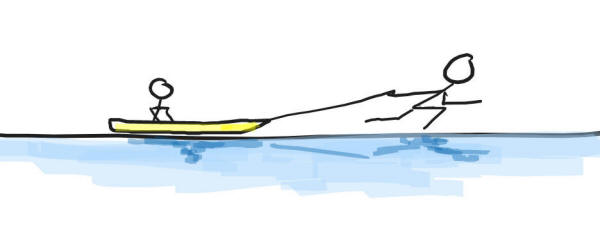 Class
65:
Monday,
4/25/22 Class
65:
Monday,
4/25/22Warm Up:
A child and a sled together weigh 200N. The sled is initially
motionless. A parent pulls the sled to our right, across a flat,
icy field, for 3 seconds, applying a constant force. At the moment
the parent stops pulling, the sled has a velocity of +6m/s. After
the parent stops pulling, the sled keeps sliding for another 12 seconds
and then comes to rest. We can assume that the force of friction
on the sled is the same whether the parent is pulling or not.
How much force is the parent applying to the
sled in this problem?
Today:
-
Review some problems in
Notes and Practice:
Friction and The Normal Force
PDF
Solutions
Video
From Class
-
Complete the "real life problem" at the end of the handout.
See example first, in the
Solutions.
-
Solve this
spool car practice problem:
-
Coming Soon... Spool Car Analysis -- Use video analysis to create a
graph of position vs time for a spool car that starts and ends at
rest. Then use the graph to find the car's average
acceleration (for the acceleration phase) and average negative
acceleration (for the deceleration phase). Last, use those
accelerations and a balance (digital or triple beam) to find the net
force and individual forces acting on your spool car during its
acceleration and deceleration phases. Make a diagram for each
phase (speeding up, slowing down) showing individual and net forces,
mass, and average acceleration.
Homework:
|
 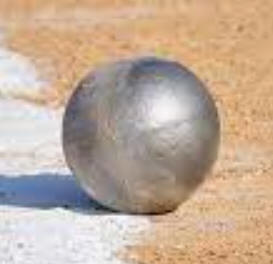  Class
64:
Thursday,
4/14/22 Class
64:
Thursday,
4/14/22Warm Up:
1. Which can you throw with more force, a Wiffle Ball® (0.045kg), a
baseball (0.145kg), or a shot put (5.45kg)? Or is there no
difference? Explain your thinking.
Some calculations -- don't peek before
thinking.
2. What limits the amount of force that you can apply when you throw an
object?
Interesting Link: article about the fastest pitch ever thrown
Today:
Homework:
|
 Class
63:
Tuesday,
4/12/22 Class
63:
Tuesday,
4/12/22Warm Up:
1.
How fast does chalk fall? Is it faster than a cat?...
My spreadsheet answer
2.
Sometimes people celebrate special occasions by firing guns into the
air. Is this safe?
 3. Why don't clouds fall out of the sky? 3. Why don't clouds fall out of the sky?
Calculated terminal
velocities of various spheres.
Today:
-
**Notice: late homework
will no longer be accepted, except in the case of absences. But
remember that missing homework won't count as a zero. If you
don't do your homework on time, your tests and projects will just
count more. Homework will count for up to 30% of your grade
this quarter (or 0% if you don't do any of it on time).
-
Check/review the homework.
-
Notes and Practice:
Friction and The Normal Force
PDF
Solutions Video
from class
-
Work time -- discuss quarter grade wrap-up
Homework:
|
 Class
62:
Friday,
4/8/22 Class
62:
Friday,
4/8/22Warm Up:
According to
this
article, emergency clinic records of 132 cats that jumped from windows of buildings showed a
90% survival rate. The average
drop was 5.5 floors.
Injuries increased with increasing heights up to 7 floors.
When cats fell from over 7 floors, they actually suffered from
“less injuries.”
Can you explain this surprising finding?
Today:
-
Reminder #1: Over spring break, I am going to consolidate all
quarter 3 grades into one assignment. If you have any missing
assignments, get them done by next Friday. Your quarter three
grade will be locked in as of next Friday.
-
Return the Newton Sled activity, and discuss the answers.
-
Notes and Practice -- Newton's 2nd Law and Terminal Velocity
PDF
Videos from Class -- Part 1
Part 2
- Near the end of class, return tests and release the test
solution videos (to help you prepare for the retake). The
retake will be next Thursday. If you can't make it to class
that day, email me ahead of time to come up with another time.
The test must be retaken before break, if you're going to retake it.
Homework:
|
 Class
61:
Wednesday,
4/6/22 Class
61:
Wednesday,
4/6/22Warm Up:
It is possible to remove a sheet paper from under a dry
erase pen without touching or tipping the pen. How can one do this
without tipping the pen? Why does the pen usually fall?
Today:
-
Notice #1: Over spring break, I am going to consolidate all
quarter 3 grades into one assignment. If you have any missing
assignments, get them done by next Friday. Your quarter three
grade will be locked in as of next Friday.
-
Notice #2:
Due to the high number of students who were absent for the test, I
won't be returning the tests until Friday. If you missed the
test you must take it during class today or on Friday. There
will be a retake next Thursday. If you have not taken the
first test by Friday, you will have to take the retake next
Thursday, and you will not have a chance to take the test again.
-
Newton Sled Activity
PDF
-
Complete the activity and answer the questions. We will
discuss the answers.
Homework:
|
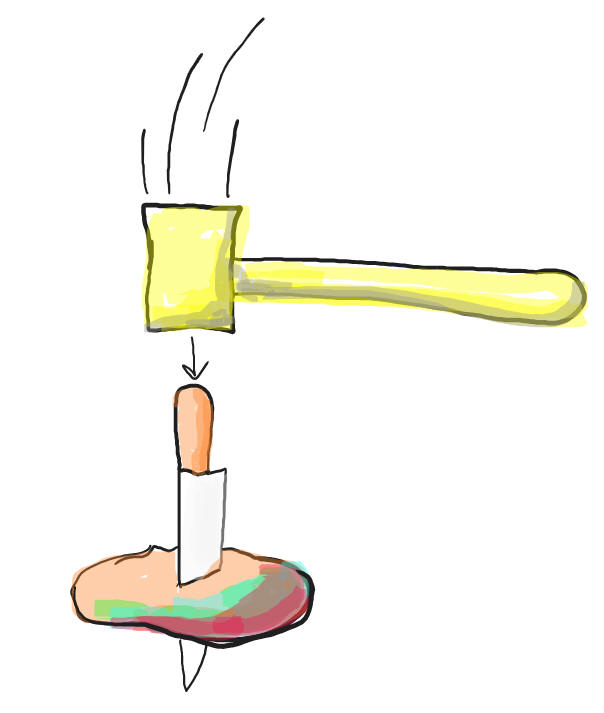 Class
60:
Monday,
4/4/22 Class
60:
Monday,
4/4/22Warm Up:
What will happen if I poke a knife
through a potato, hold both objects in the air with the knife pointing
downward, and then hammer the butt of the knife into the potato?
Why?
Today:
-
Test
-
Newton Sled Activity
Homework:
|
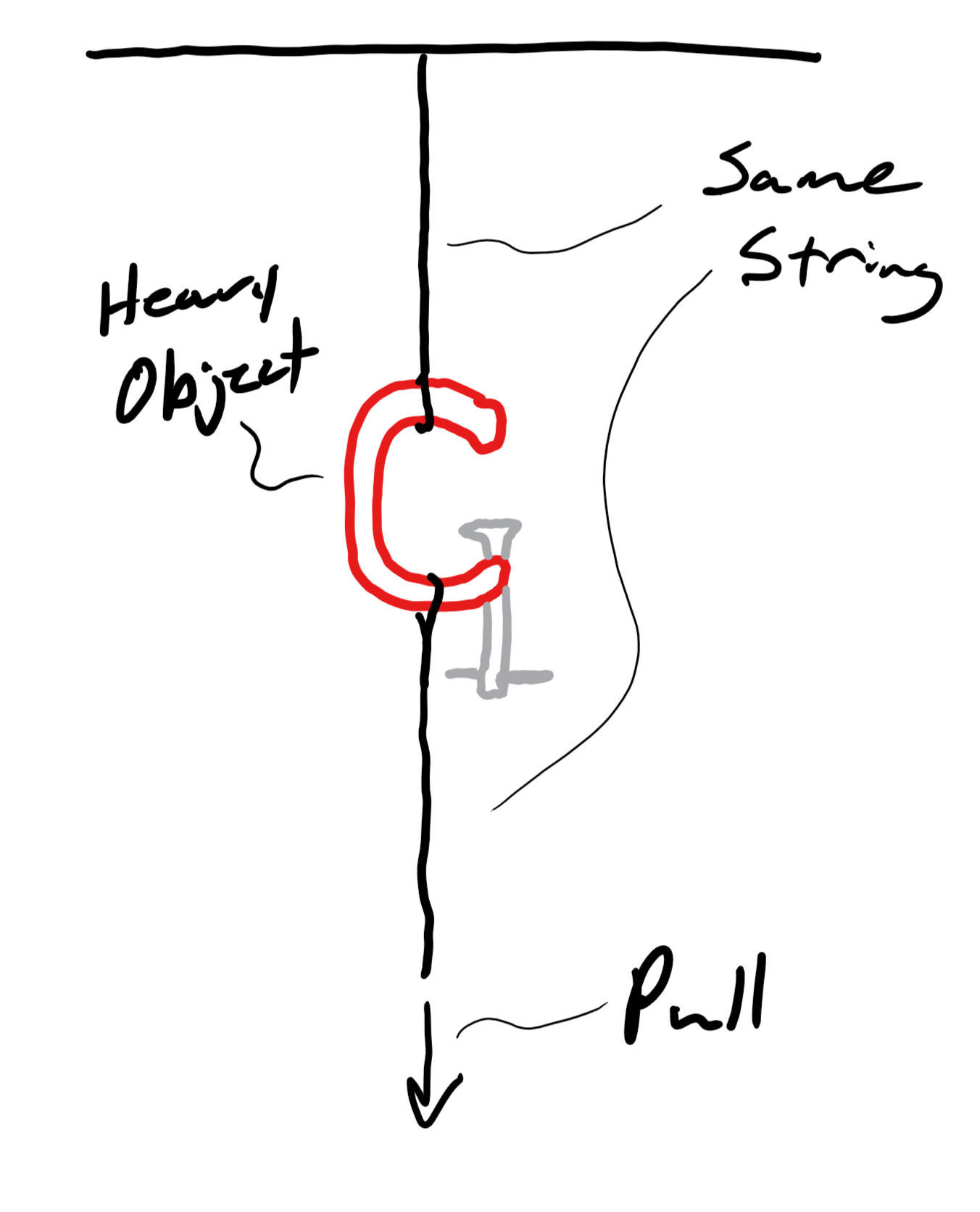 Class
59:
Thursday,
3/31/22 Class
59:
Thursday,
3/31/22Warm Up:
There is a heavy object suspended from the ceiling by a
string. Another segment of the same string is hanging downward
from the object. I am going to pull on the bottom string until one
of the two strings breaks. Which string is going to break first?
Why?
Today:
Homework:
|
|
Class
58:
Tuesday,
3/29/22 Warm Up:
Here's the data for the fastest car in the class
(on Friday). What was its average acceleration? What was its
average speed over the final foot?
|
Start time (s) |
2nd tape time (s) |
Final Time (s) |
5m Total Time (s) |
Average Acceleration (m/s/s) |
Velocity for last foot (m/s) |
Velocity of Last foot (mph) |
|
1.605 |
3.143 |
3.205 |
|
|
|
|
Today:
Homework:
|
 Class
57:
Friday,
3/25/22 Class
57:
Friday,
3/25/22Warm Up:
Consider the case of this ball.
At t = 0s, the ball is free-falling directly upward at a height of 10m,
with a speed of 20m/s. Sketch graphs of the ball's position,
velocity, and acceleration (vs. time) over the next 4 seconds.Today:
-
Lesson Starter Quiz, attendance
- Check/discuss the homework
- Work on the Spool Tractor
Challenge: (see last class for construction details)
- Practice until you are pleased with your
tractor's speed and performance. When you are ready for
the "official run," tell Mr. Stapleton so that he can video your
tractor while you video your tractor.
- Place the front of your tractor's wire on
the blue starting tape.
- Take a slow motion video of your tractor.
[Mr. Stapleton will take his own video at the same time.]
The video must show...
- Your car starting
- Your tractor's wire crossing the
middle tape (this must be clear, so stand near the end of
the car's run)
- Your tractor'swire crossing the final
tape
- Edit your video so that it is all slow
motion, and trim off any parts before it moves or after its wire
crosses the last tape.
- Use the
Vernier Video
Analysis App to analyze the video.
- Open settings (gear wheel) and change
the frame rate to 240 -- unless your phone has a different
slow motion frame rate.
- Find the starting
time and the times at which the wire crosses the middle and end
tapes.
- Use those times to calculate (just like
the starter quiz and homework #5 asked you to do):
- Your tractor'saverage acceleration
over the entire distance (distance = 5m)
- Your cartractor's average velocity
between the 2nd and last tapes (distance = 0.305m)
- On a sheet of paper (or
using this form), clearly show your
calculations and write down your answers. Turn them in to
Mr. Stapleton. Your grade will be based on how close your
calculations are to Mr. Stapleton's calculations [He will use
his video to do the same calculations.]
- Start the test review. It's due next
class.
Homework:
|
 Class
56:
Wednesday,
3/23/22 Class
56:
Wednesday,
3/23/22Warm Up:
1. How old is someone who has lived a billion
seconds? Have you lived that long?
2. What is the significance of
1 billion
heartbeats?
Today:
Homework:
-
Finish this
Practice -- unit conversions
PDF
Solutions
-
The lesson starter quiz will be similar to numbers 7-9
on the homework, except that the units and numbers may be different.
You will have to do two conversions.
|
 Class
55:
Thursday,
3/17/22 Class
55:
Thursday,
3/17/22Warm Up:
Suppose a ball is placed carefully at the top of a ramp and
released. The ramp is 6m long, and it takes 3 seconds for the
ball to roll down to the other end of the ramp.
1. Does it seem reasonable to assume that the ball will
accelerate the entire time?
2. What is the ball's average velocity?
3. What is the ball's initial velocity? (at the moment it is
released)
4. What is the ball's final velocity (as it reaches the bottom
of the ramp)?
5. What is the ball's acceleration?
6. Use this scenario to create a formula for the ball's
acceleration and displacement.
Today:
-
Lesson Starter Quiz, attendance, return papers
-
Check/discuss the homework
- Notes: "Free-Fall,
More Kinematics Formulas, and Kinematics Problems"
PDF video of notes
from class
- Begin the Spool Tractor Challenge:
(video --
spool tractor assembly)
- According to this source, the world record
for a rubber band car is 5m in 2.82s. If the acceleration
of this car was constant, what was its top speed? What was
its acceleration?
- Build a spool tractor and practice with it
to achieve the fastest possible speed over a 5m distance.
When you're ready, video the tractor's performance in slow
motion (while Mr. Stapleton makes his own video of the same
event). Make sure that you get a good view of the
tractor crossing the final floor tile. Use the Vernier
app to calculate the tractor's top speed (across the last
floor tile) and its acceleration. Show your data and
calculations on a sheet of paper and turn it in.
For 100%, your calculations must be within 10% of Mr.
Stapleton's calculations.
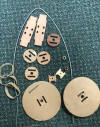 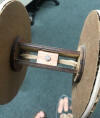 
Homework:
|
 Class
54:
Tuesday,
3/15/22 Class
54:
Tuesday,
3/15/22Warm Up:
1. For letter a, on the right describe what an object could be doing
in order to have both positive velocity and positive acceleration.
2. Do the same for the rest of the letters.
Today:
-
Return papers.
-
Discuss homework and lesson starter quizzes.
-
Practice together -- work on acceleration graph drawing at the end
of the notes
PDF
- Finish and turn in the Acceleration Video Activity: Use the
Vernier Video
Analysis App to create graphs of position vs. time.
Then find acceleration. Make the two videos described
below.
Here are the instructions.
Here's a video showing what
to do
- A dense object thrown straight up (and
falling straight down). Find the ball's acceleration on
the way up and on the way down.
- A student running, starting from a
standstill. See if you can accelerate as fast over 5
meters as a 2020 Corvette (8.1m/s2) or a 2020 Ford
F-150 (4.25m/s2).
- Begin the Spool Tractor Challenge:
- Build a spool tractor and practice with it
to achieve the fastest possible speed.
  
- According to this source, the world record
for a rubber band car is 5m in 2.82s.
Homework:
|
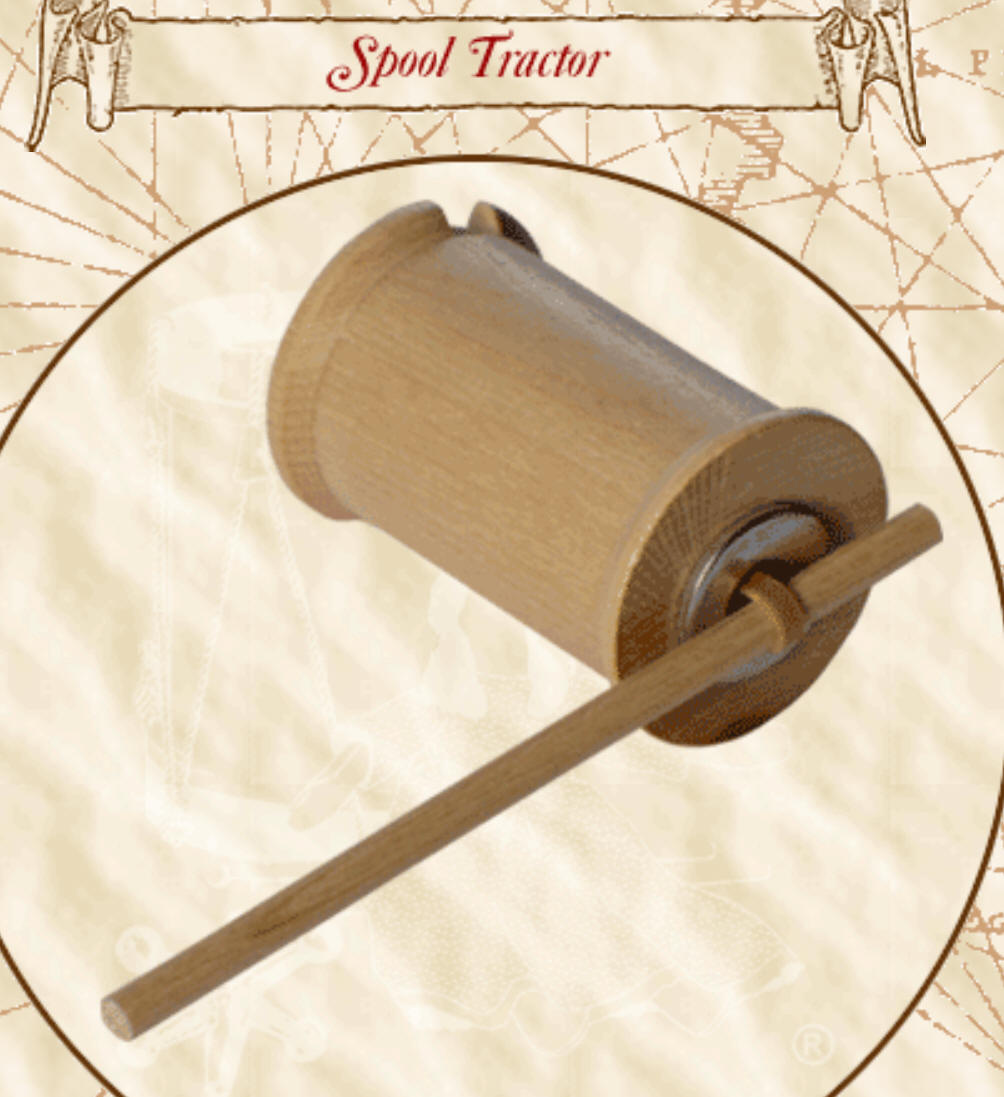 Class
53:
Friday,
3/11/22 Class
53:
Friday,
3/11/22Warm Up:
What is a
spool tractor?
How does one work?
Today:
-
Lesson Starter Quiz, return last quiz
-
Finish your graphs from last class.
Here's a good example.
-
Acceleration Video Activity: Use the
Vernier Video
Analysis App to create graphs of position vs. time.
Then find acceleration. Make the two videos described
below.
Here are the instructions.
- A dense object thrown straight up (and
falling straight down). Find the ball's acceleration on
the way up and on the way down.
- A student running, starting from a
standstill. See if you can accelerate as fast over 5
meters as a 2020 Corvette (8.1m/s2) or a 2020 Ford
F-150 (4.25m/s2).
Homework:
|
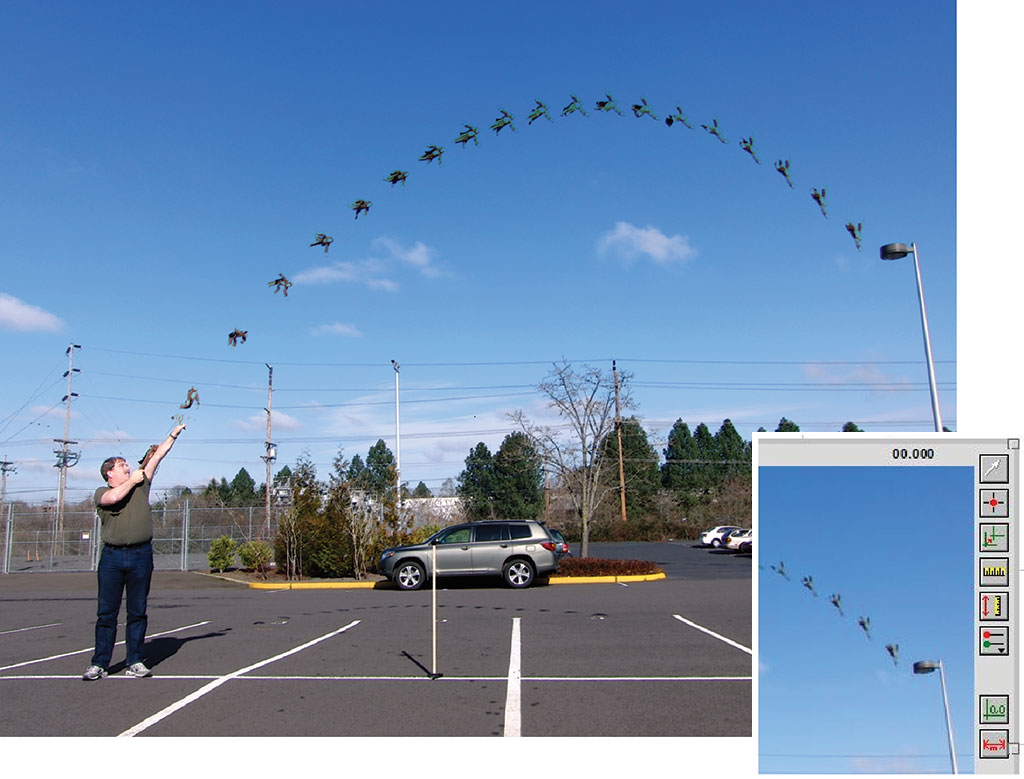 Class
52:
Wednesday,
3/9/22 Class
52:
Wednesday,
3/9/22Warm Up:
1. Assuming that the man in the picture is 2m tall, and
the frame rate of the camera was the usual 30 frames per second, what
was the approximate
maximum speed of the object?
2. Based on your answers, do you think the
assumption of 30 frames per second was too low, too high, or about
right?
Today:
-
Lesson Starter Quiz, return last quiz
-
Check/review the homework (Solutions)
-
Motion Detector Graphing Activity
-
In a group of up to 3 people, use a motion detector to create
position vs. time graphs.
-
Constant Positive Velocity
-
Constant Negative Velocity
-
Positive Acceleration
- Negative Acceleration
- Print each graph (position graph
only), and label them according to what they are supposed to
show.
- Show your calculations of velocity for
two different intervals. Then use those velocities to
calculate acceleration.
- 95% for correct calculations and
completion. +5% if you can get the values of at least two
graphs within 0.25 of 1 (e.g. 1m/s, -1m/s, 1m/s2,
-1m/s2). +10% if you can get all of your graphs
within 0.25 of 1.
Homework:
-
Prepare for the lesson starter quiz -- see the homework for class
50, below. Next class' lesson starter quiz will be a repeat of
the one described there. But I will be choosing a different
mix of velocity and position graphs to match.
|
 Class
51:
Monday,
3/7/22 Class
51:
Monday,
3/7/22Warm Up:
The sets of dots on the
right represent frames of video taken of two different balls that are
falling from the sky.
The video camera takes pictures at a
constant rate of 30 fps (frames per second).
One of the balls
is free-falling, and the other is attached to
a parachute.
-
Which ball has the parachute?
-
How can you tell?
Today:
Homework:
-
Finish the velocity and acceleration calculations on
Motion Calculations and Graphs worksheet
(PDF)
Solutions For video help, watch the linked videos above.
-
Next class' lesson starter quiz will require you to calculate
acceleration from a position vs. time graph (like today's
assignment).
|
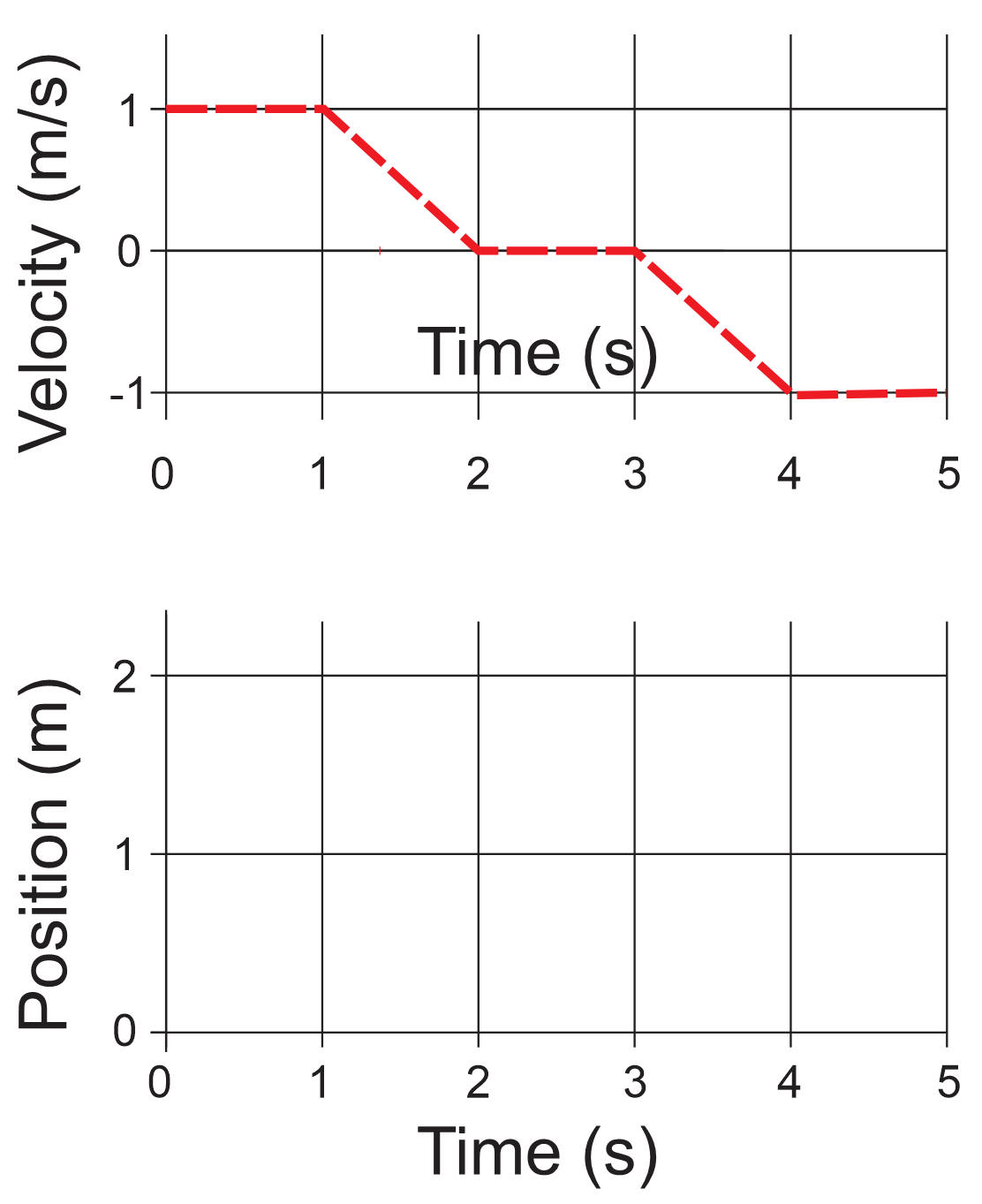 Class
50:
Thursday,
3/3/22 Class
50:
Thursday,
3/3/22Warm Up:
Someone's velocity was graphed over a time of 5 seconds.
Create a position v/s time graph for that same person over that same
time period. Assume that the person starts from a position of zero
meters.
Today:
Homework:
|
.JPG) Class
49:
Wednesday,
2/16/22 Class
49:
Wednesday,
2/16/22Warm Up:
The graph on the right shows the positions at
different times for seven different people, relative to a motion
detector at the 0m mark. Which person (people) was (were)...
- moving at a constant speed
- moving toward the sensor
- not moving at all
- accelerating
- decelerating
- accelerating the fastest
- moving at the fastest constant speed
Today:
-
Lesson Starter Quiz
-
**Announcement -- starting with today's lesson starter quiz, all
lesson starter quizzes must be made up within two weeks (unless they
are missed due to an excused absense or excused tardy).
-
A1/2 -- check/review the motion matching activity questions
-
Kinematics
Intro Notes
PDF
Filled-in Notes
- Complete #5-8 on page 4 of the Kinematics Intro notes
- Practice for the lesson starter quiz
Homework:
-
Study for the lesson starter quiz. The quiz will require you to use
a position vs time graph to create a velocity graph. Here's
a video showing an example quiz and solutions.
- Complete #5-8 on page 4 of the Kinematics Intro notes, if you
didn't finish it during class
|
 Class
48:
Monday,
2/14/22 Class
48:
Monday,
2/14/22Warm Up:
If you're trying to throw a Frisbee as far as possible,
some good advice is to "keep the fast side down." What does that
mean? Which side of the Frisbee is the fast side?
Today:
-
Lesson Starter Quiz -- Due within 4 minutes after class
starts.
- Discuss answers
- Return last class' quiz
- Next class' quiz? -- I will clarify at some point today
- Return/discuss tests. Optional test retake on Friday.
- New Unit -- Kinematics (Velocity, Speed, Acceleration)
- Motion Matching Activity
-- do the activity and answer the questions. Work in groups of
3 or 4.
- Begin
Kinematics Notes?
PDF
Homework:
-
Study for the lesson starter quiz. The lesson starter quiz will ask
you how to match graphs from today's activities with descriptions of
how the graphed object moved. The descriptions will use phrases like...
- Move away from the sensor
- Move toward the sensor
- Speed up
- Slow down
- Stop
- If you want to retake any page(s) of the test, plan to do that
on Friday. The retake will not be the same as the original
test. It will come from the test review, just as the test did.
You can expect the number of questions and total points to be the
same. Here's the test review (pdf version)
and the answers to the test review (Answers).
|
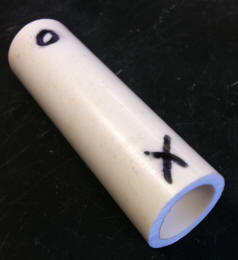 Class
47:
Thursday,
2/10/22 Class
47:
Thursday,
2/10/22Warm Up:
Spin
one of the "sprotating cylinders" by pressing one end until it squirts
out from under your finger. Try pressing the other end.
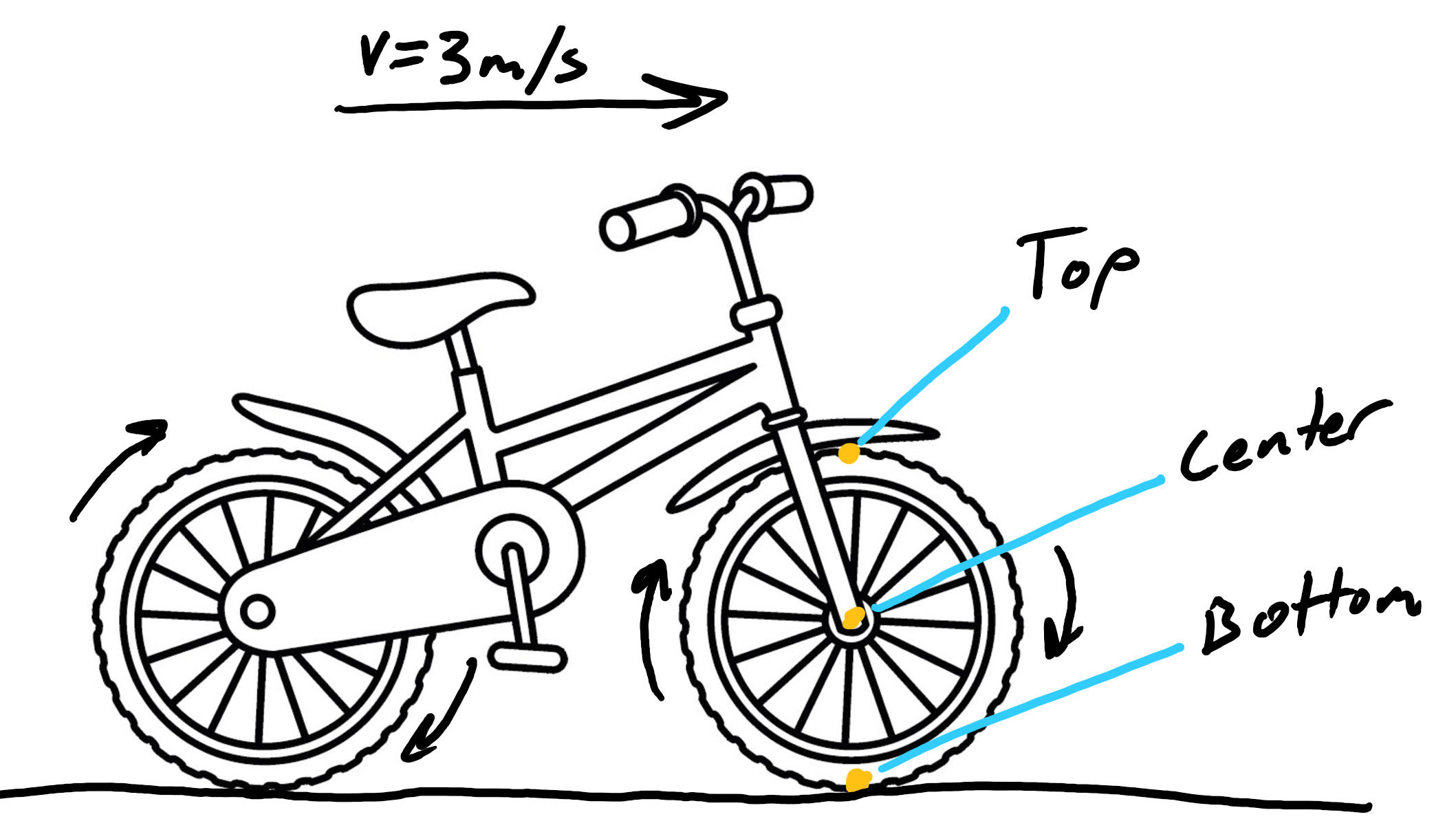 1. When the cylinder is spinning, why do you only see the
symbol that you press? 1. When the cylinder is spinning, why do you only see the
symbol that you press?
2. A bicycle rolls to our right at a speed of 3m/s
(about 7mph). What is the speed of...
a. ...a point on the top of one of the bicycle
tires?
b. ...the center of each bicycle tire?
c. ...a point at the bottom of one of
the bicycle tires?
Slow motion
Today:
-
Lesson Starter Quiz -- Due within 4 minutes after class
starts.
- Discuss answers
- Return last class' quiz
- Next class' quiz? -- I will clarify at some point today
- Test
Homework:
-
Study for the lesson starter quiz. Unless I change the plan,
the quiz will be very similar to warm-up question #2, above.
The bottom of the tire never moves. The middle moves as fast
as the bicycle, and the top moves twice as fast as the bicycle.
|
 Class
46:
Tuesday,
2/8/22 Class
46:
Tuesday,
2/8/22Warm Up:
1. What is the advantage of polarized glasses?
2.
How do they work?
 
Today:
-
Lesson Starter Quiz -- Due within 4 minutes after class
starts.
- Discuss answers
- Return last class' quiz
- Next class' quiz? -- I will clarify at some point today
- Check the first two pages of the test review.
- Finish pages 3 and 4 of the test review.
pdf version
Answers Go over the answers.
Homework:
-
Study for the lesson starter quiz and the test. The lesson
starter quiz will be question #3 from "check your understanding,"
at the bottom of this web page.
|
 Class
45:
Wednesday,
2/2/22 Class
45:
Wednesday,
2/2/22Warm Up:
1. What is a mirage?
2. What do you think causes mirages?
Today:
-
Lesson Starter Quiz -- Due within 4 minutes after class
starts.
- Discuss answers
- Return last class' quiz
- Next class' quiz? -- I will clarify at some point today
- Finish your parabolic mirror
- Complete the
test review
pdf version.
Here are some notes and assignments to help you (in case you've
misplaced yours)...
Homework:
|
 Class
44:
Monday,
1/31/22 Class
44:
Monday,
1/31/22Warm Up:
The diagram on the right shows the path of earthquake
waves as they travel through the Earth. FYI, p-waves are
"pressure" waves, and they are longitudinal. S-waves are
"sinusoidal," and they are transverse.
1. Does the diagram show reflection, refraction,
or both?
2. What happens to the speed of earthquake waves
as they travel deeper into the mantle?
3. Which layer of the Earth has the highest
index of refraction (n)?
4. Do you see anything that looks wrong?
5. How do we know the Earth has these layers, if
we have never drilled through the mantle?
Today:
-
Lesson Starter Quiz -- Due within 4 minutes after class
starts.
- Discuss answers
- Return last class' quiz
- Next class' quiz? -- I will clarify at some point today
- Last
of the Optics Notes -- Scattering, Human Vision, and Rainbows
- Build a parabolic mirror --
- In groups of 2-3, create a parabolic mirror that can focus
all parallel beams within a 2 inch diameter circle.
- Prove that your parabolic mirror can heat an object using
sunlight.
Homework:
|
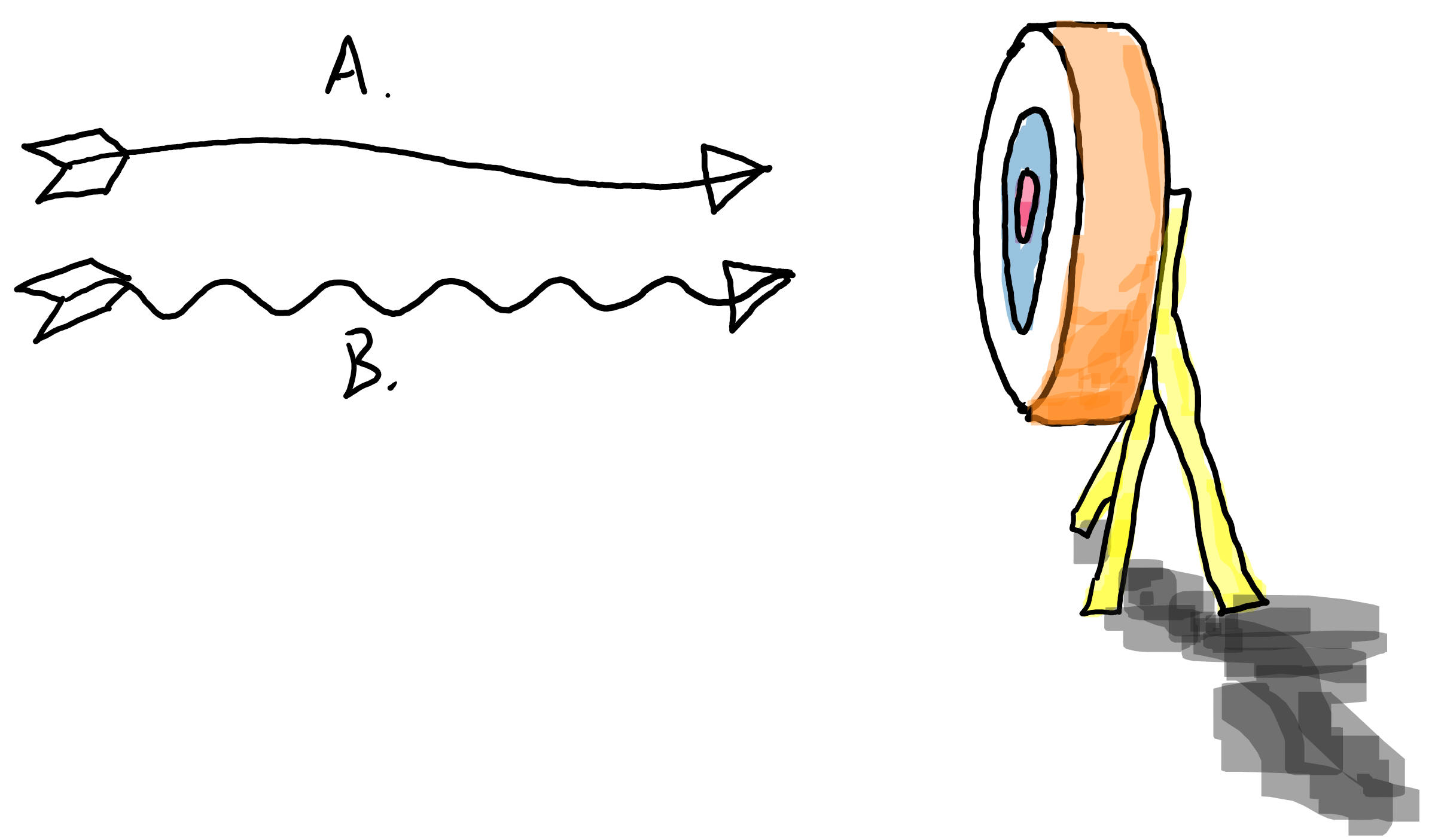 Class
43:
Thursday,
1/27/22 Class
43:
Thursday,
1/27/22Warm Up:
We already discussed
the mnemonic "Roy G. Biv." This is an introduction to another
mnemonic -- one that will help you remember which wavelengths of light
are more susceptible to scattering.
1. What's a "mnemonic?"
2. What does Roy G. Biv help us remember?
3. Which of the two arrows on the right do you
think will be more likely to penetrate deep into the target?
4. Which arrow is like blue light, and which
arrow is like red light?
5. Instead of passing through a material,
"scattered" waves get bounced around in random directions. Which color
is most likely to be bounced around or "scattered" by Earth's atmosphere
-- red or blue? Which color is best at penetrating the Earth's
atmosphere?
Today:
Homework:
|
 Class
42:
Tuesday,
1/25/22 Class
42:
Tuesday,
1/25/22Warm Up:
1. How many examples of reflection do you see in
the graphic on the right?
2. How many examples of refraction?
3. What does this graphic tell you about
refraction?
Today:
Homework:
-
None -- except studying for the lesson starter quiz
|
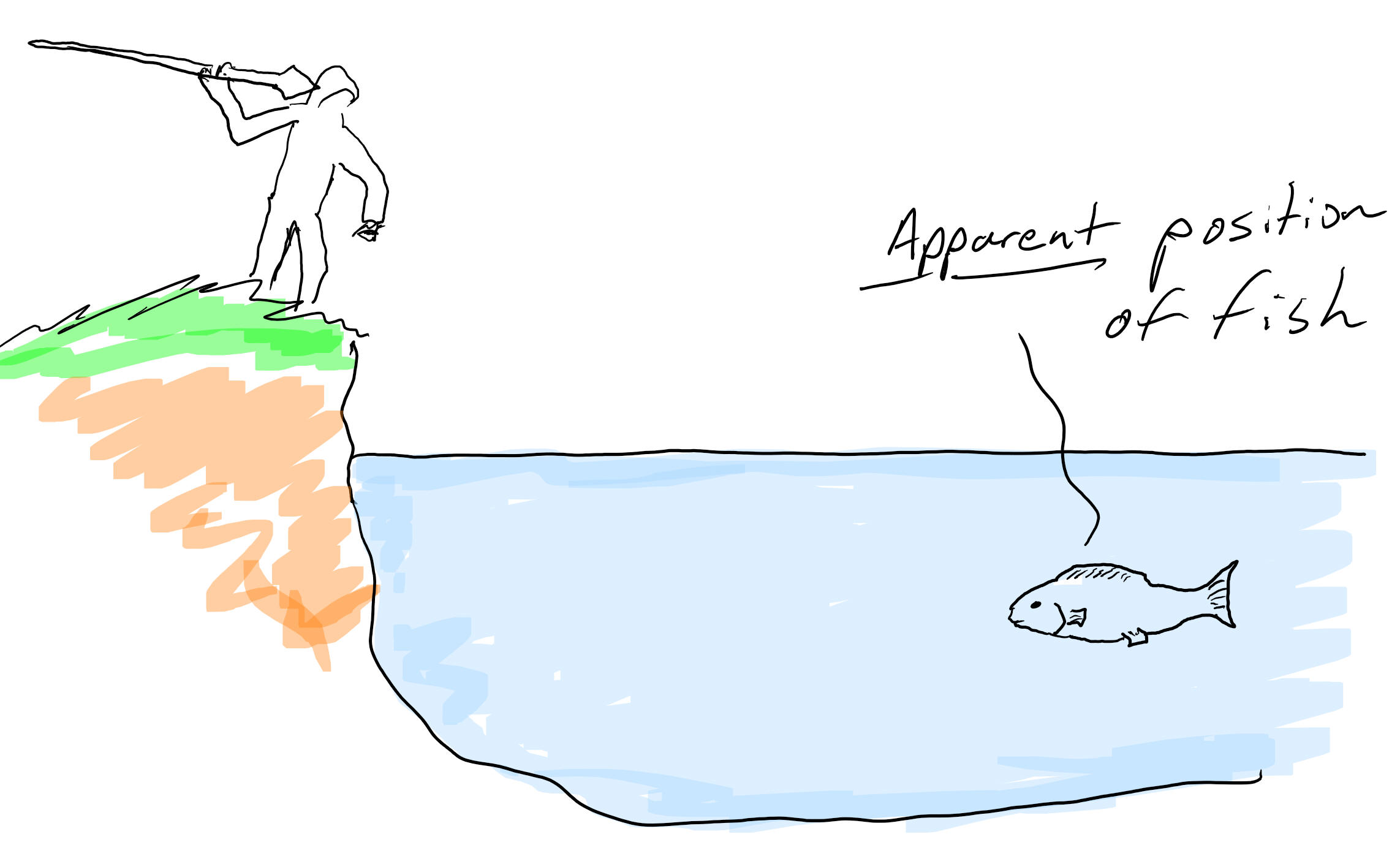 Class
41:
Wednesday,
1/19/22 Class
41:
Wednesday,
1/19/22Warm Up:
The spearfisher in the
picture is trying to spear a fish. When the spearfisher looks into
the water, the fish appears to be in
the location shown in the picture. But the fish really isn't
there.
1. Draw a dotted line from the fish's eye to the
spearfisher's eye. This represents the apparent path of a ray of
light.
2. Accounting for refraction of the light ray, draw a
realistic path of the ray of light between the fish's eye and the
spearfisher's eye.
3. Sketch the actual position of the fish.
4. If you're trying to spear a fish that you see in
the water, where should you aim?
Today:
-
Lesson Starter Quiz -- Due within 4 minutes after class
starts.
- Discuss answers
- Talk about next class' quiz.
- Refraction and Reflection Practice with ray boxes
- Finish it
- Go over the answers
- Finish #14-19 of the refraction notes. Do more if we have
time.
Homework:
|
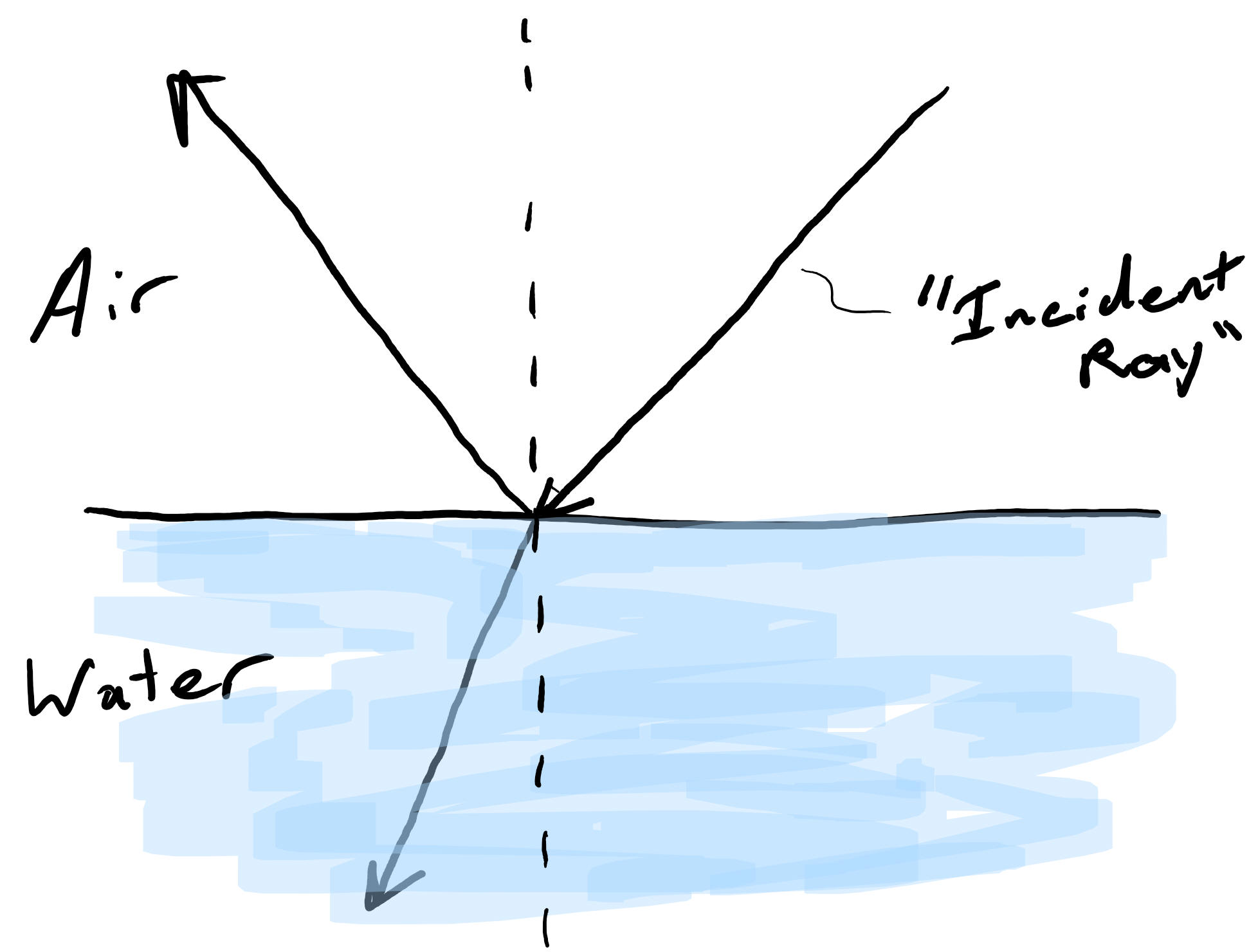 Class
41:
Wednesday,
1/19/22 Class
41:
Wednesday,
1/19/22Warm Up:
1. In the diagram, an
"incident ray" of light hits the surface of some water.
Identify...
a) The "normal"
b) The angle of incidence
c) The angle of reflection
d) The angle of refraction
2. Clarify what will be on the quiz
next class.
Today:
- New Policies:
- Lesson Starter Quiz
- When you enter the classroom, you will find a stack of
short and simple quizzes on the front table. You will
have until four minutes after the bell to complete and turn
in your quiz.
- At four minutes after the bell, I will share the answers
to the quiz.
- If your quiz is not submitted on time, you can take the
quiz during FLEX. It will be your responsibility to
have your advisor sign you up.
- If you miss the quiz for a legitimate reason, make sure
that you enter class with an "excused" blue slip. This
will be your proof.
- I will provide the answers to the next day's quiz
questions at some point during class. It's likely that
I will provide those answers along with the warm-up.
- Masks
- You must wear a mask in a way that covers your nose and
mouth at all times in this classroom except...
- When you are actively chewing or swallowing food or
drink (or within 5 seconds of beginning or ending such
an activity).
- When you take off your mask for quick (under 5
seconds) adjustments. No two such time periods can
occur in the same minute.
- Starting on Friday, for the first two weeks of this
semester (last day = 1/27) you will get one "free" warning
per class. [If you need to engineer a mask solution, figure
it out before next class.]
- After your warning, or after the first two weeks of the
semester, you will be sent to the main office, and I will
dial zero to let the office know that you are on the way.
- [Note that I reserve the right to change these policies.
If that happens I will notify you in advance. I may
add an extra period of one "free" warning per week.]
- Look over exams. Then return.
- Notes -- Reflection and Refraction ("Wave behaviors," p.2
through #18 on page 6). Handout
Filled
in notes
- Lab -- Refraction and Reflection Practice with ray boxes
Homework:
- Be ready for your lesson starter quiz on Friday, before 8:04.
|
|
Class
40:
Friday,
1/7/22 Warm Up:
**For this to make sense, I
need to tell you
something very strange and special about light...
Fred is conducting a laser experiment on
a very, very, very fast train. He attaches a mirror to the
roof of the train car and shines a quick pulse of laser light
directly upward at the mirror. Hank is standing still
outside the train. The train car is made of glass, so Hank
can see the whole thing.
The pulse of laser light goes up, reflects off of
the mirror, and then goes back down to the floor. There's
enough dust in the air to make the laser pulse visible.
1) If Fred and Hank were to draw the
laser pulse's
"flight path" (as each of them sees it), what would each of them
draw?
2) Who would see light travel a greater
distance?
3)
Assuming that the speed of the laser light is the same for both
observers,
who sees it travel for the longest amount of time?

4) Guess how many tardies have been recorded in A1/2 during the first 39
classes?
Today:
- Disassemble guitars -- after you've turned in your project
slideshow
- Calculating potential impact on your grade. There will be
no retakes of the midterm.
- Last minute check-in regarding the midterm.
- When is your exam?
- How long are exams? Can you leave early?
- What should you bring to exams?
- A1/2 Heads-up regarding next semester -- arriving on time, in
particular
- Check on missing assignments
Homework:
- Study, prepare a notecard
|
 Class
39:
Wednesday,
1/5/22 Class
39:
Wednesday,
1/5/22Warm Up:
Suppose you have a shirt that says "shirt" on the front.
When you look at your shirt in a mirror, which of these do you see?
Why don't you see the other one? In other words, why do mirrors
seem to "flip" images one way, but not the other? What's going on?
Here's a hint...

Today:
- Check midterm practice
-
Hand out notecards. You may write notes to use on the test.
You may use both sides of a 3"x5" notecard. These notes must
be handwritten by you. You may write or draw anything that you
think will be helpful. You may not use someone else's note
card.
-
If you choose not to use a notecard, I will add 2% to your exam
grade.
-
Discuss what would be most useful on a notecard.
Homework:
- Study, prepare a notecard.
|
|
Class
38:
Monday,
1/3/22 Warm Up:
The diagram below shows top views of the same boy
looking into mirrors. On the right, the mirror is a simple
flat mirror. On the left, the mirror is two separate mirrors
arranged at right angles. The boy has one blue eye and one
green eye.
When he looks in the mirrors, where will his
blue eye appear to be? Why?
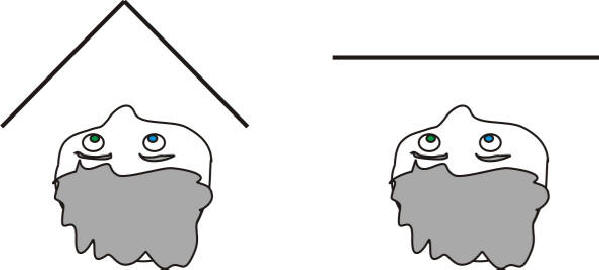
Today:
-
Return project grading sheets
-
Submit or Revise Electric Guitar Projects
-
Finish midterm practice (due on Wednesday)
Homework:
|
 Class
37:
Tuesday,
12/21/21 Class
37:
Tuesday,
12/21/21Warm Up:
1. Explain how this dad turns this pool
into a "volcano."
2. Is the Tacoma Narrows Bridge collapse
an example of resonance?
Today:
Homework:
|
 Class
36:
Friday,
12/17/21 Class
36:
Friday,
12/17/21Warm Up:
How
do people
break glass with their voices?
Today:
-
Quiz retake opportunity
- Guitar Project work:
Homework:
- Make sure that you're going to finish the project. It's
due on Tuesday.
|
 Class
35:
Wednesday,
12/15/21 Class
35:
Wednesday,
12/15/21Warm Up:
1.
If you're standing next to a race track, what do you hear as the
cars pass you?
a. Their pitch changes from high to low.
b. Their pitch changes from low to high.
c. There is no change in pitch.
2. Why?
3. What causes sonic booms?
Doppler Simulation
Supersonic
Flight Video
Today:
-
Please complete this
form. We have talked about one of the questions, but not
the other. Just take your best guess.
-
Return
Quizzes -- retake opportunity on Friday.
- Guitar Project work:
Homework:
- If you're taking the quiz retake on Friday, study. Make
sure that you can do everything in
this video.
|
|
Class
34:
Monday,
12/13/21 Warm Up:
Video Explanation (my
answers to these questions)
1. Explain how movement of the guitar string is turned
into sound waves coming out of the speaker.
2. Why is it neccesary to amplify the sound? Why
isn't the string loud enough by itself?

Today:
-
Quiz
-
Finish the guitars
- Assemble and confirm that they work
- Mark the frets (so that each fret has a frequency 1.0595
times higher than the one before) -- Get help from Mr.
Stapleton.
- Get confirmation that your fret marks are correct (have Mr.
Stapleton check), and then make nice, dark marks with a Sharpie.
- Label the fret marks with note numbers for a major key.
Do this with pencil first. Get your numbers verified.
Then use a Sharpie. Do this on the side of the neck
"above" the string, when the nut is on your left and the saddle
is on your right. Write "Major" somewhere in this area,
near the nut.
- Both classes -- label the fret marks with their minor key
numbers. Do this on the other side of the string, opposite
the major key numbers.
- Guitar Project work:
Homework:
- None, unless you need to study to retake the quiz at some point.
|
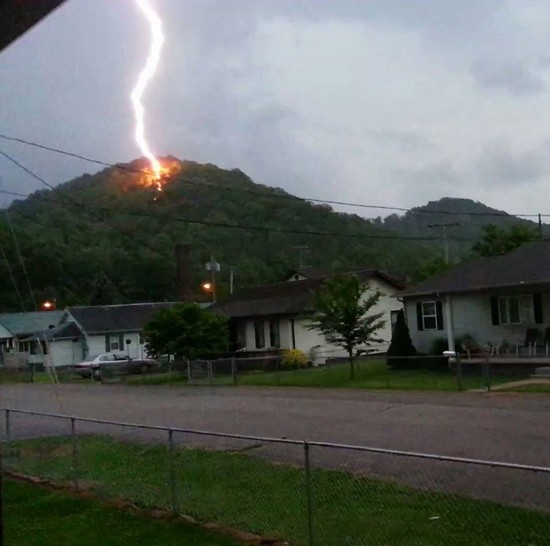 Class
33:
Tuesday,
12/7/21 Class
33:
Tuesday,
12/7/21Warm Up:
If you see lightning strike a point 1 mile away, how long can you expect
to wait before you hear thunder? Why?
Today:
-
Return the practice quizzes. Go over the
answers and make a video explaining the solutions. Next class
there will be a real quiz with the same kinds of questions.
-
Finish the guitars
- Assemble and confirm that they work
- Mark the frets (so that each fret has a frequency 1.0595
times higher than the one before) -- Get help from Mr.
Stapleton.
- Get confirmation that your fret marks are correct (have Mr.
Stapleton check), and then make nice, dark marks with a Sharpie.
- Label the fret marks with note numbers for a major key.
Do this with pencil first. Get your numbers verified.
Then use a Sharpie. Do this on the side of the neck
"above" the string, when the nut is on your left and the saddle
is on your right. Write "Major" somewhere in this area,
near the nut.
- A3/4 only -- Label the fret marks with their minor key
numbers. Do this on the other side of the string, opposite
the major key numbers.
- Make a song video
- Find a song to play. You will get extra points if you
play a song that is not on my list. But it has to be
recognizable, correct, and more difficult than something like
"Hot Cross Buns."
- Determine whether your song is in a major key or a minor
key. Play the song using the correct group of notes on
your guitar. Keep in mind that there may be a few
"accidentals" -- notes that aren't in the same key as the rest
of the song.
- Figure out what key your're playing in. If you're
using the numbered notes, the key name is the same as the note
for your open string. You can find that note by using a
tuner, like
this
online option. If you're interested, here's the
song sheet (note number notation) from 2014.
Homework:
- Study for the quiz next class.
It will have the same types of questions as the practice quiz.
|
|
Class
33:
Tuesday,
12/7/21 Warm Up:
Remember that ordinary air pressure is about 14.7psi...
1. What does "psi" mean?
2. According to the
table below, the "sound amplitude" of a .30-06 rifle fired at a
distance of 1m is about 1psi. What is the air pressure (in
psi) in one of the sound wave's compressions? What is the air
pressure in one of the sound wave's rarefactions?
3. According to the
table, there is a limit to how loud an undistorted sound can be.
Why can't sounds keep getting louder and louder forever?
|
Source of sound (in air) |
Sound Pressure -- amplitude
(psi) |
Volume in Decibels, calculated by
20*LogP/Po |
Po (threshold of hearing, in
psi) |
Loudest Pressure divided by Quietest Audible Pressure |
|
Shockwave (distorted sound waves > 1 atm;
waveform valleys are clipped at zero pressure) |
14.69543147 |
194.0956869 |
2.9E-09 |
5,067,390,163 |
|
Theoretical limit for undistorted sound at 1 atmosphere environmental pressure |
14.69543147 |
194.0956869 |
|
|
|
Stun grenades |
2.900652647 |
180.0019545 |
|
|
|
Simple open-ended thermoacoustic device[6] |
1.830166788 |
176.0018534 |
|
|
|
.30-06 rifle being fired 1 m to
shooter's side |
1.053662074 |
171.206067 |
|
|
|
M1 Garand rifle being fired at 1 m |
0.728498912 |
168.0006182 |
|
|
|
Rocket launch equipment acoustic tests |
0.580130529 |
166.0225545 |
|
|
|
Jet engine at 30 m |
0.091660624 |
149.9956962 |
|
|
|
Threshold of pain |
0.009166062 |
129.9956962 |
|
|
|
Vuvuzela horn at 1 m |
0.002900653 |
120.0019545 |
|
|
|
Hearing damage (possible) |
0.002900653 |
120.0019545 |
|
|
|
Jet engine at 100 m |
0.029006526 |
140.0019545 |
|
|
|
Non-electric chainsaw at 1 m |
0.000913706 |
109.9681656 |
|
|
|
Jack hammer at 1 m |
0.000290065 |
100.0019545 |
|
|
|
Traffic on a busy roadway at 10 m |
9.15156E-05 |
89.98194182 |
|
|
|
Hearing damage (over long-term exposure, need not be
continuous) |
5.16316E-05 |
85.01035459 |
|
|
|
Passenger car at 10 m |
2.90065E-05 |
80.00195455 |
|
|
|
EPA-identified maximum to protect against hearing loss and
other disruptive effects from noise, such as sleep
disturbance, stress, learning detriment, etc. |
|
#NUM! |
|
|
|
Handheld electric mixer |
5.51124E-06 |
65.57702656 |
Classroom Unit Ventilator |
|
|
TV (set at home level) at 1 m |
2.90065E-06 |
60.00195455 |
|
|
|
Normal conversation at 1 m |
2.90065E-06 |
60.00195455 |
|
|
|
Very calm room |
9.19507E-08 |
30.02313979 |
|
|
|
Light leaf rustling, calm breathing |
9.16606E-09 |
9.995696197 |
|
|
|
Auditory threshold at 1 kHz |
2.90065E-09 |
0.001954545 |
|
|
Today:
Homework:
|
|
Class
32:
Friday,
12/3/21 Warm Up:
What does this picture have to do with waves and guitars?
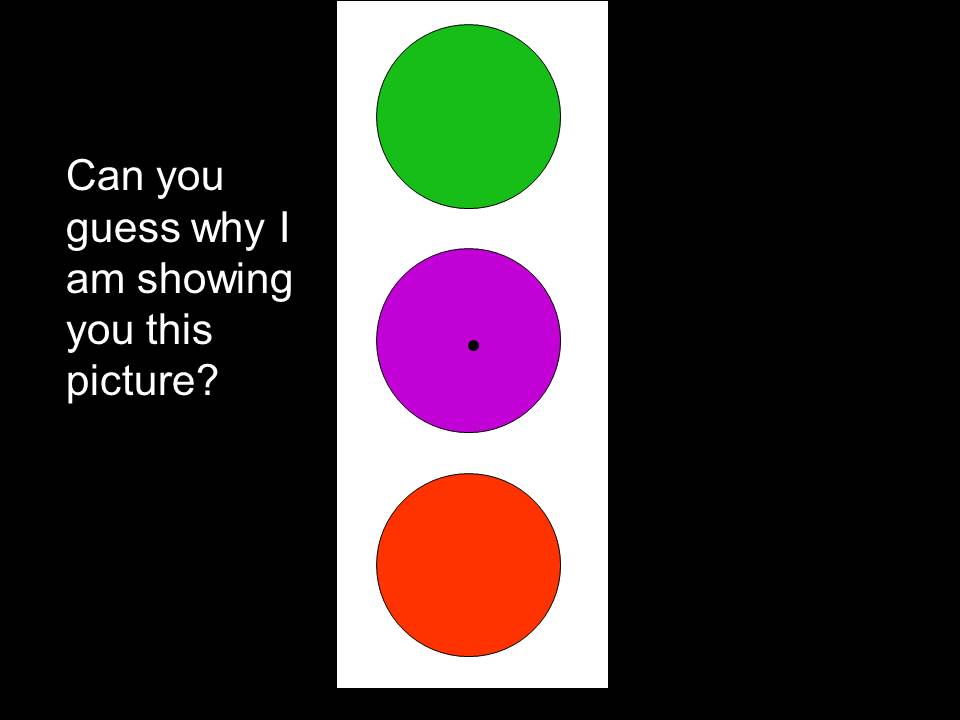
ppt
Today:
-
Check/review the homework.
-
Finish the notes on standing waves and harmonics
-
Finish the guitars.
Homework:
|
 Class
31:
Wednesday,
12/1/21 Class
31:
Wednesday,
12/1/21Warm Up:
What is a wave?
What is a sound?
How do ears work?
Khan Academy Sound Waves
Today:
Homework:
- Complete #17-21, and #23 on pages 9-10 of the packet.
|
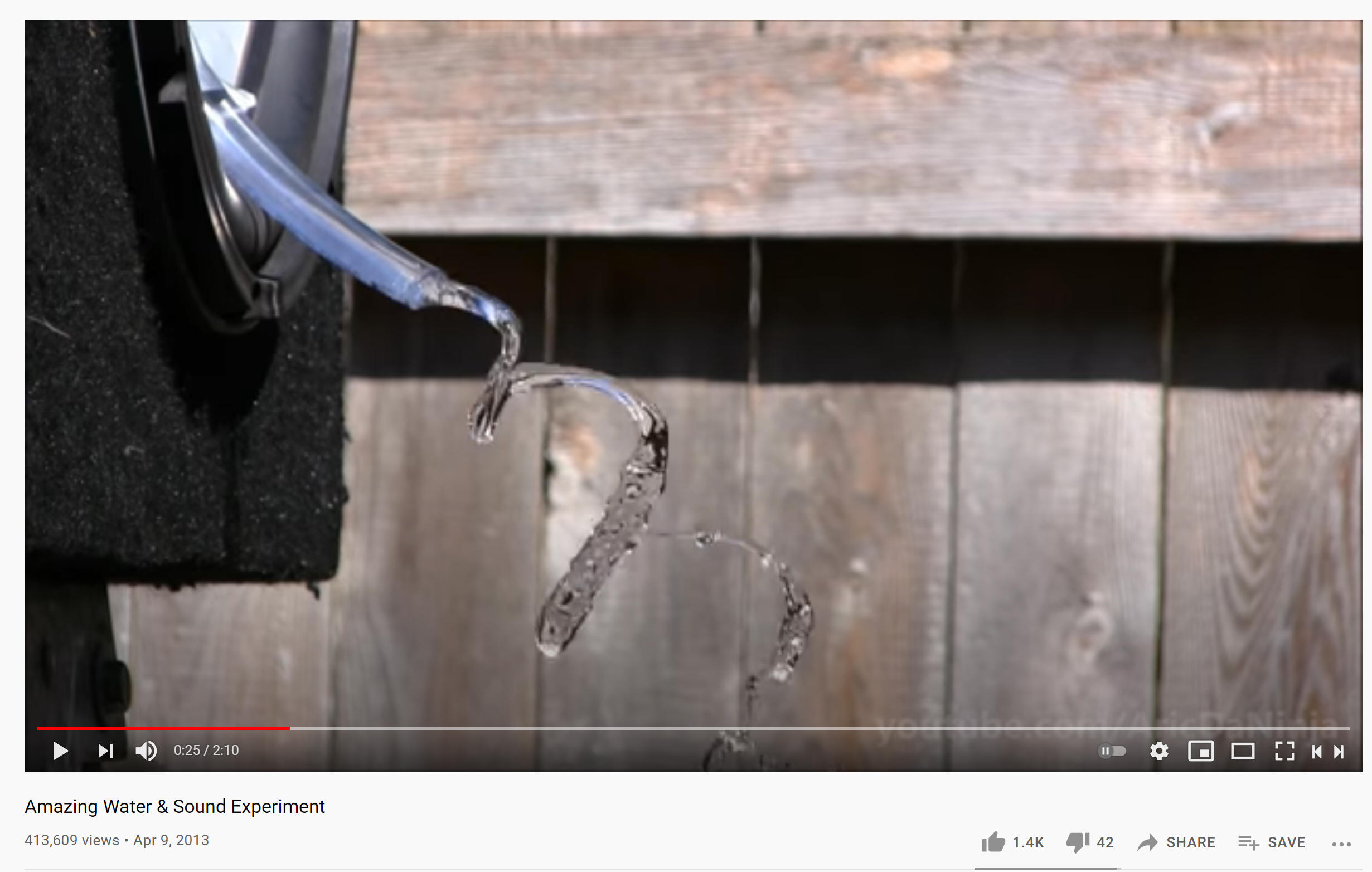 Class
30:
Monday,
11/29/21 Class
30:
Monday,
11/29/21Warm Up:
What's happening in the "Amazing
Water and Sound Experiment?"Today:
-
Turn in project videos (or let me know who you worked with).
-
New Unit -- Sound and Waves
-
Finish making guitars.
Homework:
|
 Class
29:
Thursday,
11/18/21 Class
29:
Thursday,
11/18/21Warm Up:
What can you play on a one string guitar?
Today:
Homework:
|
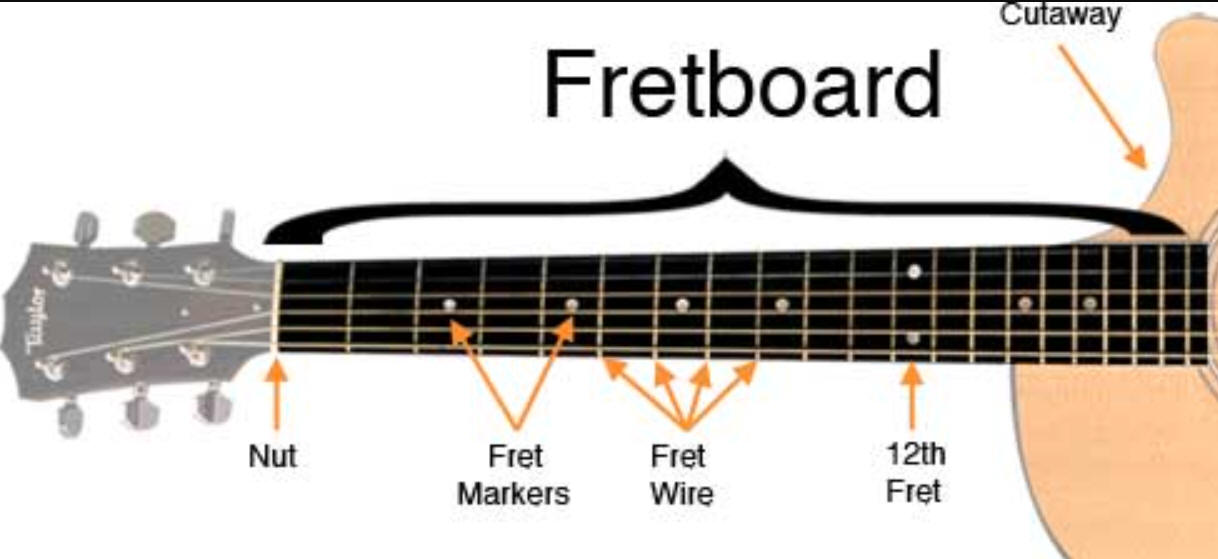 Class
28:
Tuesday,
11/16/21 Class
28:
Tuesday,
11/16/21Warm Up:
How do guitarmakers determine the spacing of the frets on
a guitar?
Today:
-
Quiz
-
Finish your pickup.
-
Begin constructing your guitar.
Electric Guitar
Instructions When it's constructed, "tune"
it by making fret marks. Use a tuner like
this one
to make pencil marks one musical tone apart (e.g. A, A#, G, G#...)
Homework:
- If you want to retake the quiz next class, study.
|
 Class
27:
Friday,
11/12/21 Class
27:
Friday,
11/12/21Warm Up:
How is an electric generator like an electric motor?
Today:
-
Check out the
quizlet
-
Learn how to solder. Before you make your pickup, show me that
you can solder a magnet wire to a stranded wire -- and get
continuity.
-
Make magnetic pickups -- a type of electric generator. Here's
a link to the
instruction page.
Homework:
- Study the quizlet. We will have a brief quiz over this
on Tuesday.
|
 Class
26:
Wednesday,
11/10/21 Class
26:
Wednesday,
11/10/21Warm Up:
How does this
electric motor work? Can it be improved?
Today:
-
Return and disassemble remaining wiring projects. Return parts for
re-use (and the last two points on the project).
-
Continue project work. Next class we will probably begin
working on magnetic pickups (a kind of generator), so see finish up
what you can today.
Homework:
|
 Class
25:
Monday,
11/8/21 Class
25:
Monday,
11/8/21Warm Up:
Your team must
make a video that clearly showing your buzzer all of its parts -- and
features you (your voice and "fingers," at least) explaining how it works. What do you think is the easiest way to
make and turn in this video?
Today:
-
Return and disassemble remaining wiring projects. Return parts for
re-use (and the last two points on the project).
-
Work on the
Solenoid Buzzer Project
-
If you're done with the solenoid buzzer, submit it. Then
return all of your materials (wire goes on cardboard, clearly
labeled with "10m of 28 gauge magnet wire." Then begin the
motor or speaker project.
Homework:
|
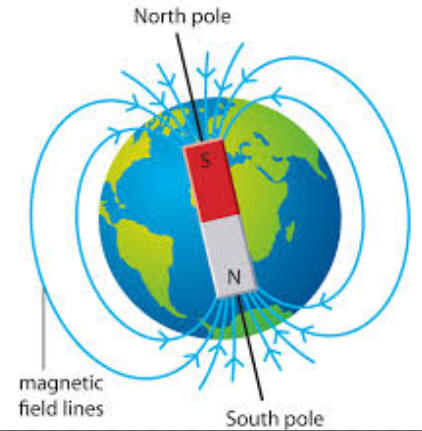 Class
24:
Thursday,
11/4/21 Class
24:
Thursday,
11/4/21Warm Up:
1. Is there anything wrong with the diagram on the right?
2.
Why is the north pole of a magnet called the
"north" pole?
Today:
-
Return and disassemble wiring projects. Return parts for
re-use (and the last two points on the project).
-
If your wiring project is not finished, simply draw the rest of the
wires, LEDs, etc. Then label everything as if the wiring and
LEDs were real -- and as if they worked. Then turn in your
project.
-
Magnetism Notes
PDF
Filled-in notes
Video of notes
during class
-
Solenoid Buzzer Project
Homework:
|
 Class
23:
Tuesday,
11/2/21 Class
23:
Tuesday,
11/2/21Warm Up:
How does this solenoid-powered buzzer work?
Today:
-
Discuss the upcoming units and projects...
- Electricity & Magnetism Projects: Complete
at least
two of the following projects.
One project must be the magnetic pickup, because we will use
that in the next unit to make an electric guitar.
For each project, you must make a short explanatory video
explaining how your object works. You can work on these
projects alone or in pairs.
- Choice Projects (complete at least 1)
- Solenoid Buzzer: Watch this
instructional video showing how to make a
Solenoid Buzzer.
Draw a sketch of a solenoid buzzer design that uses
only the materials below:
- wood, nails, hot glue/glue guns,
drill/drill bits, sheet metal screws, enameled
wire (10m of 28 gauge), sandpaper (and belt sander), saw (not
really necessary), strips of springy magnetizable steel (approx 0.5"
wide, 3" long), and a D.C. power source (set betwen 3V and 6V).
- With those materials, you will have to make a working
solenoid buzzer, as shown in the video.
- Motor
- Speaker (a form of simple motor)
- Required Project: Magnetic Pickup (a form of generator)
- Waves project -- make a single string electric guitar
(a.k.a. the electric "Diddleybow")
Homework:
|
|
Class
22:
Friday,
10/29/21 Warm Up:
None -- try to wrap up the project today
Today:
- Finish the Wiring Project
- Return some old quizzes
- If you finish the wiring project, start E&M (electricity and
magnetism) project #1 -- build a solenoid buzzer.
- Watch this
instructional video showing how to make a
Solenoid Buzzer.
Draw a sketch of a solenoid buzzer design that uses
only the materials below:
- wood, 2 nails, hot glue/glue gun, duct tape, 10m
of 28 gauge enameled
magnet wire, sandpaper, sander, saw, 1 thin strip of steel steel (approx 0.5"
wide, 3" long), and a D.C. power source.
- With those materials, you will have to make a working
solenoid buzzer -- alone or in pairs.
Homework:
|
 Class
21:
Wednesday,
10/27/21 Class
21:
Wednesday,
10/27/21Warm Up:
What is a solenoid? How does it work?
Today:
-
Work time -- finish the wiring project and turn in your model.
-
If you're done early, begin the first magnetism project...
- Watch this
instructional video showing how to make a
Solenoid Buzzer.
Draw a sketch of a solenoid buzzer design that uses
only the materials below:
- wood, nails, hot glue/glue guns, duct tape, enameled
wire, sandpaper, saw, strips of magnetizable steel (approx 0.5"
wide, 3" long), and a D.C. power source.
- With those materials, you will have to make a working
solenoid buzzer -- alone or in pairs. You may cut, glue, or
tape things, but you will not be allowed to nail or drill.
Nailing and drilling are not necessary.
Homework:
|
 Class
20:
Monday,
10/25/21 Class
20:
Monday,
10/25/21Warm Up:
When electric current flows
through an electric motor, a force is produced, causing motion.
An electric motor forced
into motion generates electric current.
I have three identical corded drills and one driver bit. With
no additional materials, how can we power two of the drills by plugging
just one of them into the wall?
Today:
-
Work time -- finish the project and turn in your model.
-
Next Unit -- Electricity and Magnetism
Homework:
|
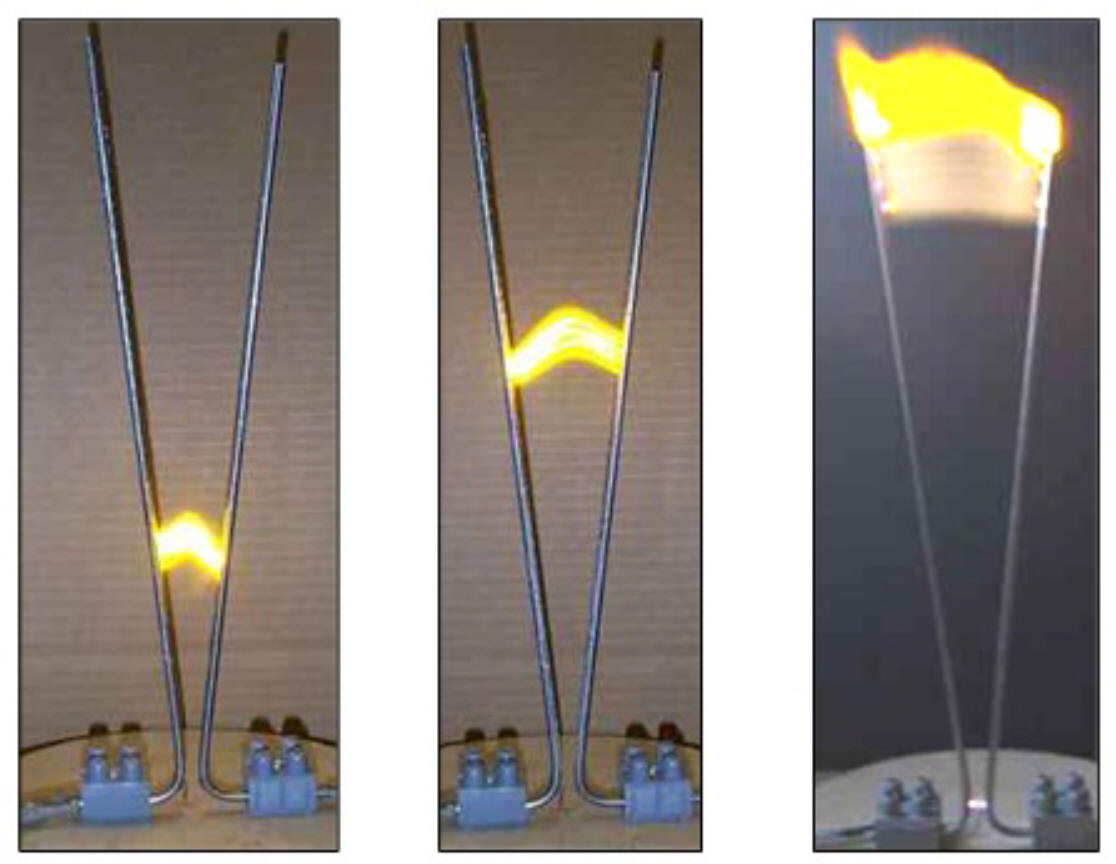 Class
19:
Wednesday,
10/20/21 Class
19:
Wednesday,
10/20/21Warm Up:
What is a Jacob's Ladder? What is its
purpose?
Today:
-
Cabin Wiring Project
Updates:
- How to make good connections
- How to avoid short circuits
- Color coding with bulbs -- and why
- What to turn in
Homework:
|
  Class
18:
Tuesday,
10/19/21 Class
18:
Tuesday,
10/19/21Warm Up:
The pictures on the right show breaker panels.
1. What is the purpose of a breaker?
2. How does an electrician decide how many
breakers are needed?
3. Why are there different kinds of
breakers?
Today:
Homework:
|
 Class
17:
Friday,
10/15/21 Class
17:
Friday,
10/15/21Warm Up:
1. Why is the guy in the video wearing a
metal suit?
2. Why are the sparks jagged?
3. What else do you notice the sparks
doing?
Today:
-
Quiz
- IM TC
Jagged spark Jacob's ladder? our tc?
- If there's time...You're going to be designing and wiring a model of a simple (but
comfortable) electrically-powered cabin. Let's brainstorm a
list of basic electrical needs.
Homework:
|
 Class
17:
Wednesday,
10/13/21 Class
17:
Wednesday,
10/13/21Warm Up:
Let's build the circuits on the right, and find the missing information,
with the
PhET DC Circuit Kit.
Today:
Homework:
|
 Class
16:
Thursday,
10/07/21 Class
16:
Thursday,
10/07/21Warm Up:
The purpose of a fuse is to open a circuit when the current gets too
high. How can we set up a demonstration of this with light bulbs,
a power source, and a fuse?
Today:
Homework:
|
 Class
15:
Tuesday,
10/05/21 Class
15:
Tuesday,
10/05/21Warm Up:
What can Tango and Cash teach us about electricity?
Today:
Homework:
|
 Class
14:
Friday,
9/30/21 Class
14:
Friday,
9/30/21Warm Up:
The deceptively complicated case of the
electrified pickle...
Why does the pickle light up?
Why does it light up on just one end? Is it
always the same end?
joule heating
Electric Arc
Arc lamp
Hyperphysics electric pickle info
Today:
- Return and review quizzes
- Finish the PhET simulation
Homework:
|
 Class
13:
Wednesday,
9/29/21 Class
13:
Wednesday,
9/29/21Warm Up:
1.
How can you start a fire with a 9 Volt Battery and some steel?
2. Ohm's Law says V = IR. Guess what
each of the letters means. Solve for I. Solve for R.
3. P = VI. Guess what each of the
letters means. Solve for V. Solve for R.
Today:
Homework:
|
 Class
12:
Monday,
9/27/21 Class
12:
Monday,
9/27/21Warm Up:
Can we recreate some of the experiments performed by the "brainiacs?"
Do we want to?
Today:
- Review the practice quiz through #13.
- Finish the practice quiz and discuss the
answers.
Practice Quiz answers Talk about Wednesday's quiz.
Maybe do some verbal quizzing.
- The new unit -- Electric Current and
Circuits
- Look at a D.C. circuit -- pHet simulation?
Online Textbook Links:
Chapter 19, Introduction to Electrical Circuits
Homework:
- Study for quiz next class
|
 Class
11:
Thursday,
9/23/21 Class
11:
Thursday,
9/23/21Warm Up:
There is a "pith ball" hanging next to the Van de Graaff generator.
The pith ball is foam that is covered with a conductive, metallic paint.
What do you think will happen when the Vand de Graaff generator is
turned on? Why?
Today:
Online Textbook Links:
Homework:
- Complete 1-13 on the practice quiz
PDF
|
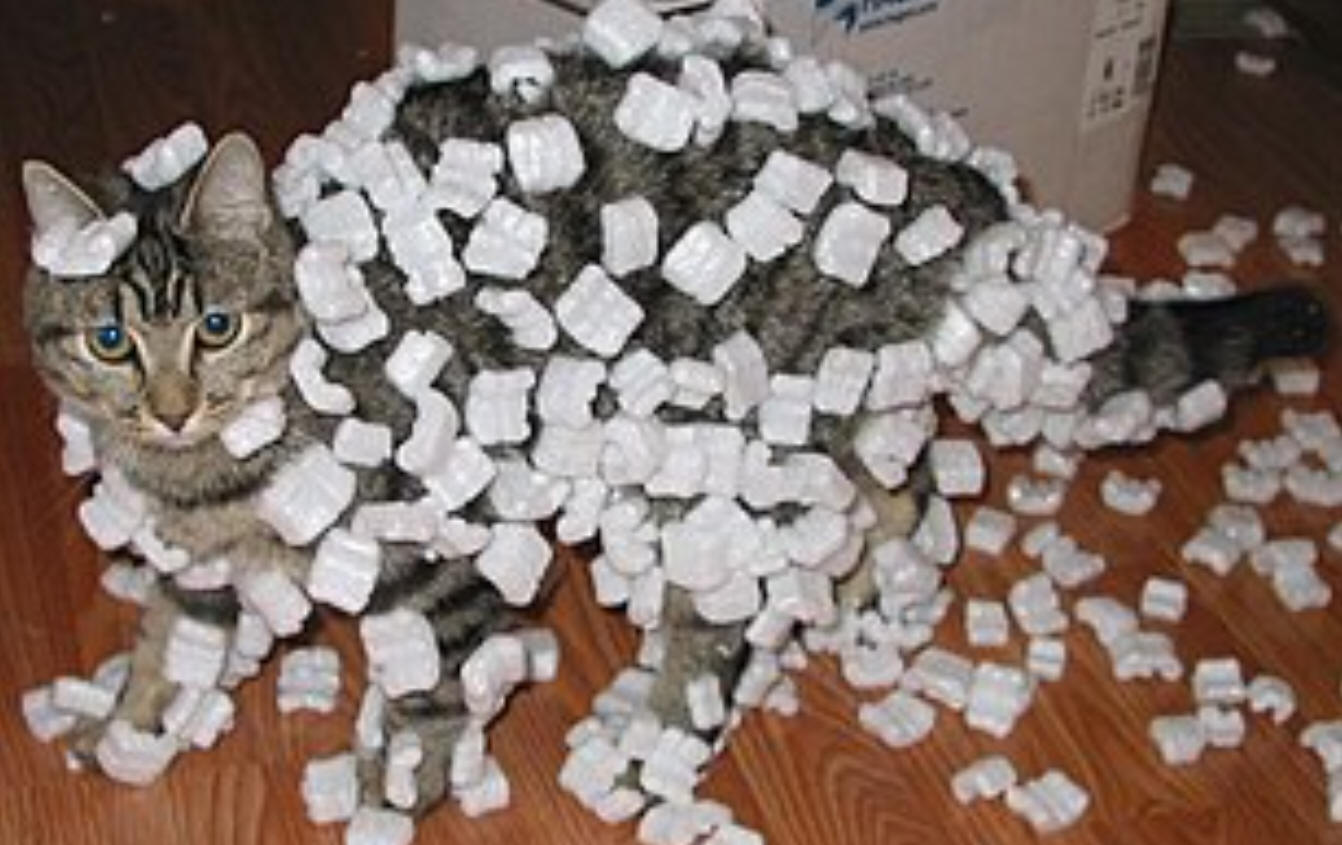  Class
10:
Tuesday,
9/21/21 Class
10:
Tuesday,
9/21/21Warm Up:
Which of the following can we say with certainty? Why?
A) The balloons have the same net charge
B) The cat and the foam "peanuts" have
opposite net charges.
C) Both A and B are correct.
D) None of these answers is (are) correct.
Today:
Homework:
|
 Class
9:
Friday,
9/15/21 Class
9:
Friday,
9/15/21Warm Up:
How
does a Van de Graaff Generator Work?
Today:
Homework:
- None, unless you would like to retake your quiz. If you
want to do a retake, study the Quizlets.
|
 Class
8:
Wednesday,
9/13/21 Class
8:
Wednesday,
9/13/21Warm Up:
1. If you rub a balloon on your head and
then hold it next to your hair, your hair is attracted to the balloon.
Why?
2. Your hair may also stand on end after
being rubbed by a balloon. Why?
3. The balloon may stick to the wall or
ceiling. Why?
4. This all works
better in drier air.
Why?
5. What events contributed to
this gas station
fire?
Today:
- Check quizlet submission in Classroom.
- Quiz -- Measurement and Rockets
- Finalize the
rocket standings spreadsheet. Awards for longest time aloft will have to
wait until Friday. Winners from each class, please get your donut
orders in!
- New Unit: Electricity
Homework:
|
|
Class
7:
Monday,
9/13/21 Warm Up:
None -- change of plans due to weather forecast
Today:
- Rocket rebuild, launch, and maybe find time
aloft.
- We're not measuring burnout velocity, so you
don't need to measure your rocket's height.
- Quiz on Wednesday, instead of today.
- Remember to mark the quizlet complete when
you've finished it.
Homework:
|
 Class
6:
Thursday,
9/9/21 Class
6:
Thursday,
9/9/21Warm Up:
1. Which do you think lasts longer, the
flight up or the flight down?
2. Why does adding weight to a rocket make
it go higher?
Today:
- Take a look at
some sensor data.
- Complete the
Rocket
Analysis
- Make a decision -- Do we want to rebuild and
launch one more time, or do we want to go ahead and start on
electricity?
Homework:
- There are two quizlet assignments in Google Classroom.
Study both quizlets. You should study them until you know the
information, but when you've studied each one at least once, you can
mark each assignment complete.
- There will be a simple quiz next class. The quiz will have
the same questions as the quizlets, plus you will have to
measure a line in appropriate metric units of your choice. If
you don't do well on the quiz, you can have another try.
|
 Class
5:
Tuesday,
9/7/21 Class
5:
Tuesday,
9/7/21Warm Up:
Video Practice -- If you have a phone, take
it out and get a video of this object that I am about to launch in the
room. Keeping your camera still the
whole time, video with the highest frame rate (slowest motion)
that your phone will allow. Try to capture the entire flight.
Today:
- Finish assembly and measure rockets.
- Make sure that there's ventilation in
the probe area.
- Add "rocket length" to your rocket data
sheet.
- Fill out your data sheet and turn it in.
- Launch rockets
- Video your rocket with a phone.
Record the entire flight in slow motion. We have a Samsung
Galaxy that you can use.
- Measure altitude with the Pocketlab
Voyager sensor.
- Return to the classroom. If there's
time...
- Download the data from the Pocketlab
Voyager sensors.
- Upload your video to your Google Drive
Homework: None.
|
 Class
4:
Thursday,
9/2/21 Class
4:
Thursday,
9/2/21Warm Up:
1. Why can't we "see our breath" right
now?
2. When we do see our breath, what are
we actually seeing?
3. I made a
video showing how I can
make my breath visible at will. Can you tell how I
did it?
Today:
Homework: None. Be ready to launch
your rocket on Tuesday!
|
 Class
3:
Tuesday,
8/31/21 Class
3:
Tuesday,
8/31/21Warm Up:
The air around us is pressurized to about 14.7psi.
1. What does 14.7psi mean?
2. What evidence is there that there is air pressure around us?
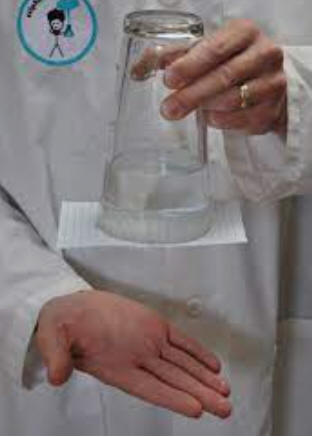 3. We are going to measure the heights of your rocket flights
using a
pressure
sensor. How will a pressure sensor tell the height of the rocket? 3. We are going to measure the heights of your rocket flights
using a
pressure
sensor. How will a pressure sensor tell the height of the rocket?
Today:
- Take attendance
- Student info sheet
-- A3/4 Only
- Water Rocket Design:
- Provided materials -- 1 meter of duct tape, Two 2-liter
bottles, DVDs, Hot Glue
- **New requirement: your rocket must incorporate a chamber
for storing an air pressure sensor. The
- Get bottles and decide which one you will use for a pressure
chamber (fuselage). Don't cut into this bottle!
- Use Clifford Heath's Water Rocket Simulation to plan your
design. Record your data and draw your design on this
Rocket Design sheet.
PDF Version
- Use the digital calipers to measure the nozzle diameter
(same as the launcher plug diameter, which is easier to
measure).
- Find the pressure chamber bottle diameter (using the big
calipers)
- Use the Clifford Heath's simulation to determine the
best combination of water and dry mass. Write down the
best volume of water and the best dry mass.
- Measure the mass of your pressure chamber bottle.
Subtract it from your dry mass to figure out how much mass
your fins, tape, and other additions should have.
- **Make a sketch of rocket design. On the diagram,
include the following:
- Names of your group members
- Labels for the materials that you plan to use for
fins, weights, and other purposes
- Write down the best amount of water and the best dry
mass, according to Clifford Heath's simulator.
Write: "water volume = ____" and "dry mass = ______"
Homework: None
|
|
Class
2:
Friday,
8/27/21
 Warm Up: Warm Up:
According to
this
article, emergency clinic records of 132 cats that jumped from windows of buildings showed a
90% survival rate. The average
drop was 5.5 floors.
Injuries increased with increasing heights up to 7 floors.
When cats fell from over 7 floors, they actually suffered from
“less injuries.”
1. What's happening here?
2. What determines the rate at which something falls?
Today:
Homework: If you want to bring in any
extra materials for rocket construction, round them up and bring them to
class on Tuesday.
|
|
Class
1: Wednesday,
8/25/21
 Physics
100: Mr. Stapleton Physics
100: Mr. Stapleton
Warm Up:
1. Suppose you're absolutely still.
What do you need to do in order move your body to another location?
2. Suppose a spaceship is floating in
space, absolutely still. What does it need to do in to
 another
location? another
location?
Today:
Homework: None
|

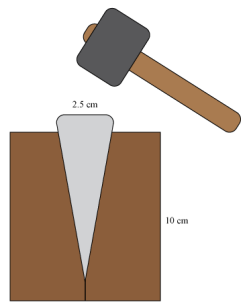

 Class
77: Wednesday,
6/1/22
Class
77: Wednesday,
6/1/22 Class
76: Friday,
5/27/22
Class
76: Friday,
5/27/22 Class
75: Wednesday,
5/25/22
Class
75: Wednesday,
5/25/22 Class
74: Monday,
5/23/22
Class
74: Monday,
5/23/22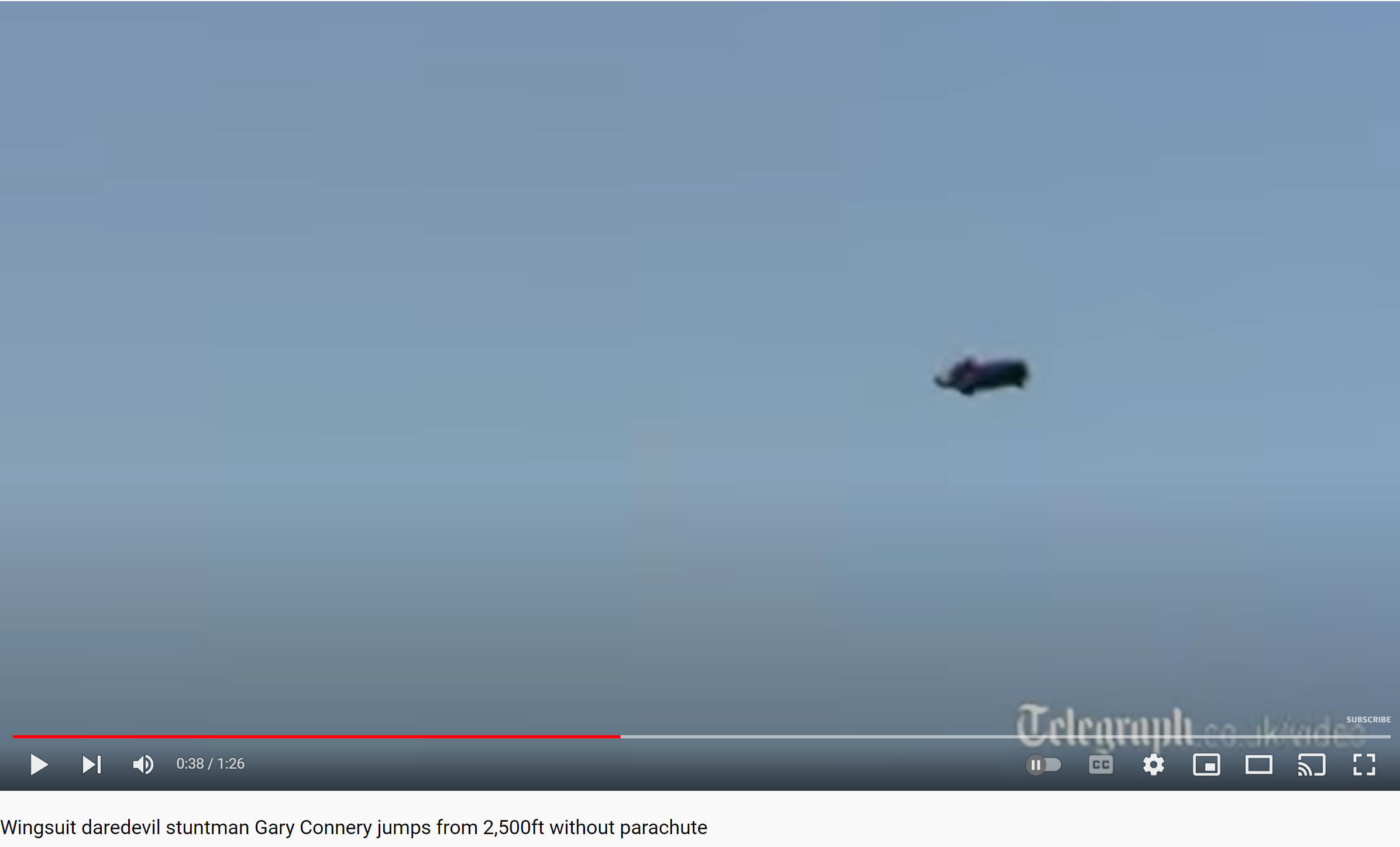 Class
72: Friday,
5/11/22
Class
72: Friday,
5/11/22 Class
71: Wednesday,
5/11/22
Class
71: Wednesday,
5/11/22 Class
70: Monday,
5/9/22
Class
70: Monday,
5/9/22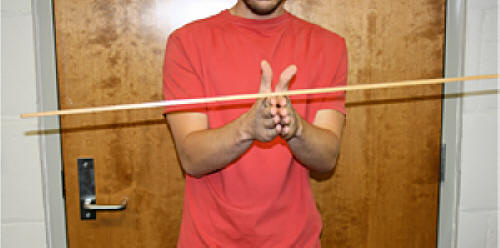 Class
69: Thursday,
5/5/22
Class
69: Thursday,
5/5/22 Class
Class
 Class
Class
 Class
Class



 Class
Class
 3. Why don't clouds fall out of the sky?
3. Why don't clouds fall out of the sky?

 Class
Class

 Class
Class
 Class
Class
 Class
Class



 Class
Class
 Class
Class
 Class
Class
 Class
Class
 Class
Class
.JPG) Class
Class
 Class
Class
 Class
Class
 1. When the cylinder is spinning, why do you only see the
symbol that you press?
1. When the cylinder is spinning, why do you only see the
symbol that you press?

 Class
Class
 Class
Class
 Class
Class
 Class
Class
 Class
Class
 Class
Class

 Class
Class






 Class
Class

 Class
Class


 Class
Class


 Class
Class
 Class
Class


 Class
Class
 Class
1
Class
1
 Class
1
Class
1
 Class
1
Class
1 Class
1
Class
1
 Class
1
Class
1 Class
1
Class
1
 Class
1
Class
1
 Class
10
Class
10
 Class
9
Class
9 Class
8
Class
8 Class
6
Class
6
 Class
3
Class
3 3. We are going to measure the heights of your rocket flights
using a
pressure
sensor. How will a pressure sensor tell the height of the rocket?
3. We are going to measure the heights of your rocket flights
using a
pressure
sensor. How will a pressure sensor tell the height of the rocket?
 Physics
100: Mr. Stapleton
Physics
100: Mr. Stapleton another
location?
another
location?